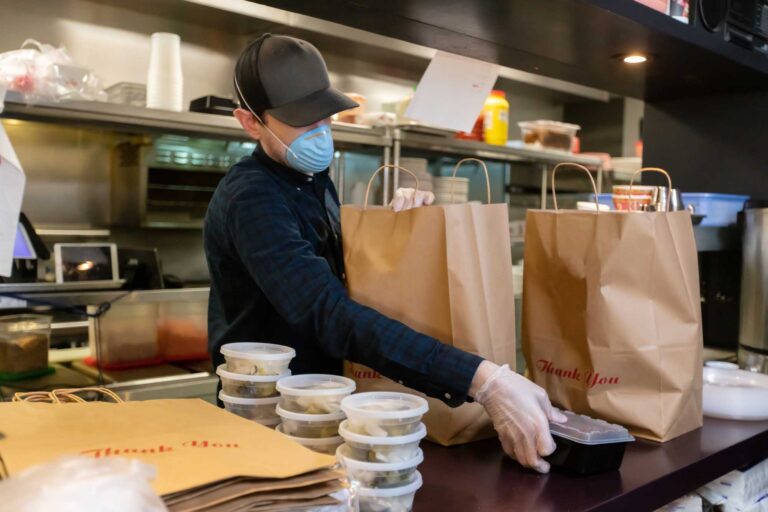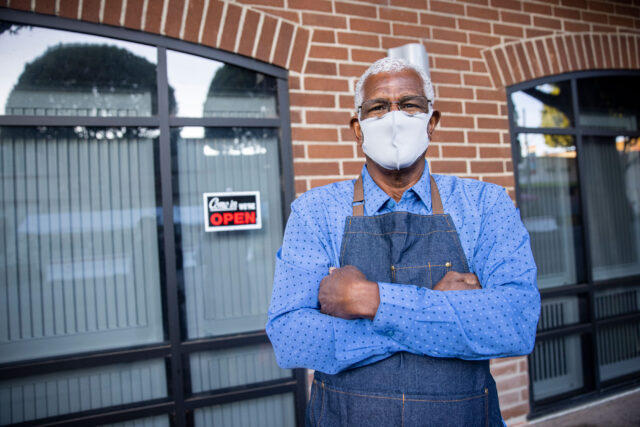Just as the jobs recovery was picking up steam, news of the COVID-19 omicron variant and its presence in California have raised questions about the future pace of recovery. Last Friday’s jobs report suggests that in November the US economy added 210,000 jobs. While California data are not yet available, in recent months the state contributed about one-fifth of all jobs added nationwide. If that pattern holds, that significant share of national job growth in November will have been slow relative to recent months, yet similar to the sluggish pace of last winter. Does that mean that this year California should expect a repeat of last winter’s economic slowdown?
Most recent job growth has occurred in the hardest-hit service sectors, but jobs in these sectors still lag behind pre-pandemic levels. In October, one-quarter of all jobs added in California were in food service and accommodations, arts and entertainment, and other services. However, employment in these sectors remains nearly 17% below pre-pandemic levels.
The omicron variant poses risks to these sectors, even if shutting down the economy is unlikely at this point. Working in person during the pandemic comes with health risks and has proven undesirable to many former employees in those sectors. Wages in these sectors have increased substantially since before the pandemic—any additional health risks would likely drive wages higher, with fewer people interested in working these face-to-face jobs at prevailing wages. Such difficulties in hiring could constrain recovery in these sectors this holiday season, perhaps even leading to a repeat of the declines we saw last December and January.
In addition, consumer spending has shifted away from many service sectors—and remains curtailed. In the mid-2000s, spending on services—including health care and services related to leisure and hospitality and other personal care—began to outpace growth in spending on goods. While this shift drove growth in service jobs and businesses, it also exposed these sectors to larger declines during the pandemic.
Since the pandemic, spending on goods has increased substantially relative to spending on services, arguably a main factor driving higher inflation in goods rather than services in 2021. In 2020, spending on services in California fell 7% relative to 2019; spending on goods grew 3% (changes nationwide were similar). The decline in recreation spending and food service/accommodations was even greater at 40% and 21%, respectively.
While national data suggest that consumers are increasing their demand for services related to leisure and hospitality, spending still lags behind. For example, food service and accommodation spending is up 10% compared to pre-pandemic, while spending on durable goods like vehicles is up 34%. Service spending on recreation and transportation remains below 2019 levels.
The shift away from service spending has persisted longer than expected during this recession—and has been closely tied to the trajectory of COVID. The next phase of that trajectory, possibly driven by the omicron variant, will likely determine whether consumers are comfortable returning to pre-pandemic patterns of leisure spending. The last two years have shown consumers are slow to return to old patterns while health concerns remain and have instead increased savings considerably.
Many Californians have fared well economically during the pandemic, fueling increased consumer spending overall and particularly on durable goods. Indeed, data out last week from the Census Bureau suggest that median family income in the state increased 4.7% in 2020 (from about $91,000 in 2019 to over $96,000), a larger increase than in any year since before the Great Recession.
However, many have struggled with the abrupt and lasting shift in employment opportunity, and nearly 1.4 million Californians remain unemployed as of October. For these affected workers and businesses, unprecedented direct assistance from the government during the pandemic played a role in sustaining consumer spending and economic activity (though it may also be affecting employment or resignations for some). It also prevented increases in poverty. Some of these pandemic responses—like increased benefits from unemployment insurance and stimulus payments—have come to a close. Others—like tax credits for low-income families with children—may continue in some form if the Build Back Better bill is passed in the US Senate. Amid new COVID challenges, ensuring that policy interventions are well targeted to those households and businesses that are still struggling will be critical to keep the recovery going and avoid repeating last winter’s slow economic growth.






